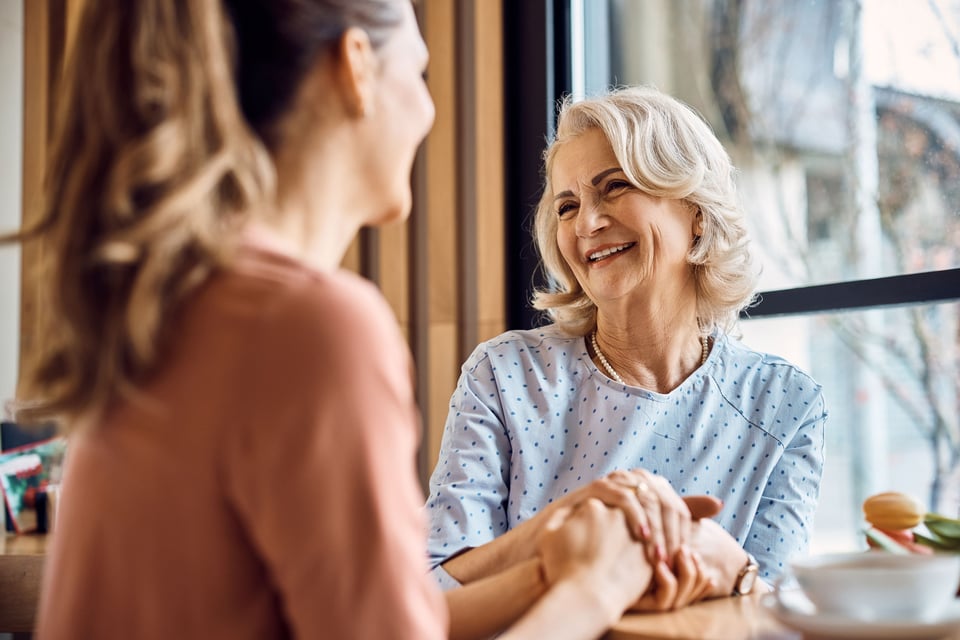Every year, nearly 36 million older adults fall. Falling can undermine your health, make it more difficult to do what you love, and affect your plans for the future. But you can reduce fall risk with the right fall prevention strategies.
Anyone can fall. One minute, you're carrying a stack of books down the stairs. The next minute, you’re trying to catch yourself because you slipped on the loose area rug on the bottom step. But as you age, the risks associated with a fall grow. Osteoporosis, for example, can cause your bones to fracture more easily.
Fall risk prevention doesn’t need to be difficult, expensive, or time-consuming. It simply requires identifying the highest-risk areas in your home and reducing those risks. These fall prevention strategies can help you feel safe and confident in your home without radically changing your lifestyle or even your decor.
Secure your furniture.
When you trip, what’s the first thing you do? In most cases, you’ll look for something to grab onto. Heavy furniture can help you stop a fall, but only if it’s secure. Otherwise, you may pull furniture over, turning a minor fall into a serious injury. This is especially true of top-heavy furniture and dressers with a weight distribution that changes with open drawers.
Take some time to mount all of your furniture to the wall. Not only will securing furniture improve fall safety, but it’s also a crucial childproofing strategy if children live in or visit your household.
Stay safe in the shower.
Fall prevention doesn’t have to mean giving up a nice morning shower. However, the bath oils and scented soaps that turn a shower into luxury can also make the floor slippery. Reduce your fall risk by installing anti-slip pads on the shower floor and a sturdy grab bar. These can make all the difference if you ever lose your balance.
Take care of your body.
A moment of inattention can mean a fall for just about anyone, but your health is a major determinant of a fall’s severity. For example, osteoporosis increases the risk of a bone fracture following a fall. That can mean a hospital stay, intensive rehabilitation, and a lot of pain.
Exercise, especially weight-bearing exercise such as lifting weights or doing yoga, can strengthen your muscles and support good bone health. A calcium supplement can also be essential, especially if you don’t have enough calcium in your diet. Vitamin D — which you can obtain from food, supplements, or sunlight — helps your body use calcium. Ask your doctor about taking a supplement. If you already have osteoporosis, talk to a medical provider about medication that can help slow bone loss.
Be mindful of rugs.
That beautiful rug you love can pose a hazard if it slides when you walk, especially if you’re carrying something heavy. But don’t think you have to settle for boring decor! Simply invest in anti-skid backing for your rugs. For an additional layer of protection, consider securing the corners of rugs near walls and under heavy, mounted furniture.
Ensure railings are secure.
Stairs are a leading cause of falls. Falling on the stairs is much more dangerous than falling on solid ground. Stairs — even small flights — can pose a serious risk. These strategies can help you avoid falling on stairs:
- Always have at least one hand free when going up and down stairs. If you need to carry something heavy, ask someone to help you.
- Invest in secure, strong railings on both walls of your stairwell.
- Never store anything on the steps, even for a moment.
- Avoid putting rugs or anything else that could pose a tripping hazard on the stairway.
- Practice caution and avoid carrying kids or pets while using stairs. Don’t run up or down steps, and always keep one hand on the railing.
Know your risk factors.
A lifetime of wellness requires taking an honest look at your risk factors so you can mitigate them. Ask your doctor the following:
- Do I take any medications that increase the risk of falling? Are there safer alternatives?
- Are there any lifestyle changes I should make to reduce my fall risk? For example, weight-bearing activity can improve bone and muscle strength.
- Can I take medication to reduce my risk of injury if I do fall? Is osteoporosis medication an option for me?
Create an emergency plan.
It can be scary to think about falling. However, by planning how you might manage a fall, you can start to feel a greater sense of control. Consider developing a plan that addresses the following:
- How could you move around your home if walking were to become difficult? Help yourself by hanging a grab bar or mounting furniture to the wall in each room.
- What steps would you take to summon emergency help? An emergency call necklace or bracelet can offer peace of mind. If you own a cell phone, take it with you as you go from room to room, or invest in a clip or holster that allows for hands-free wearing.
- Can you plan regular check-ins with a loved one? If you live alone, consider a daily phone or coffee date with a neighbor or loved one. This is a great way to stay socially connected. It also alerts loved ones that something may be wrong if you don’t show up for a scheduled chat.
Fall prevention strategies are the first step.
For some people, senior living communities offer meaningful connections and the peace of mind of knowing that help is there if you need it. In the right community, you can enjoy an active lifestyle in a safe, secure home.
If you’re considering senior living options, check out this free senior living assessment that will offer personalized feedback based on your answers to a few quick questions.





